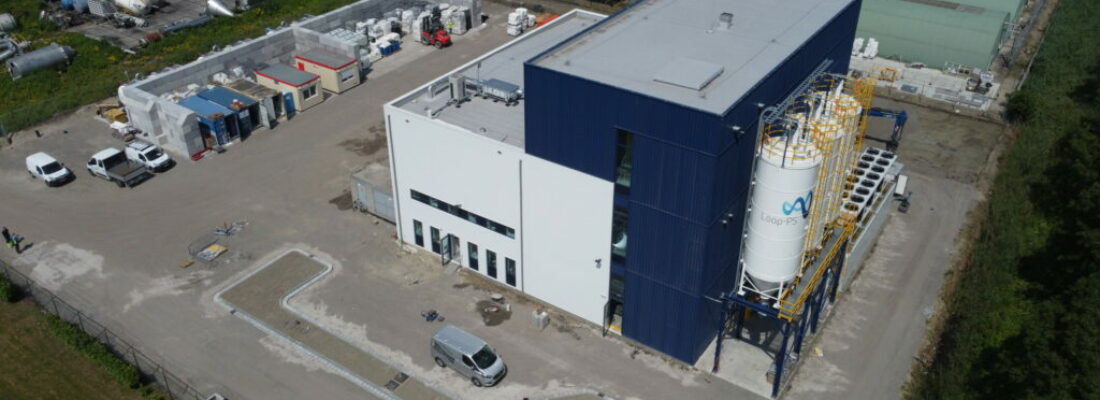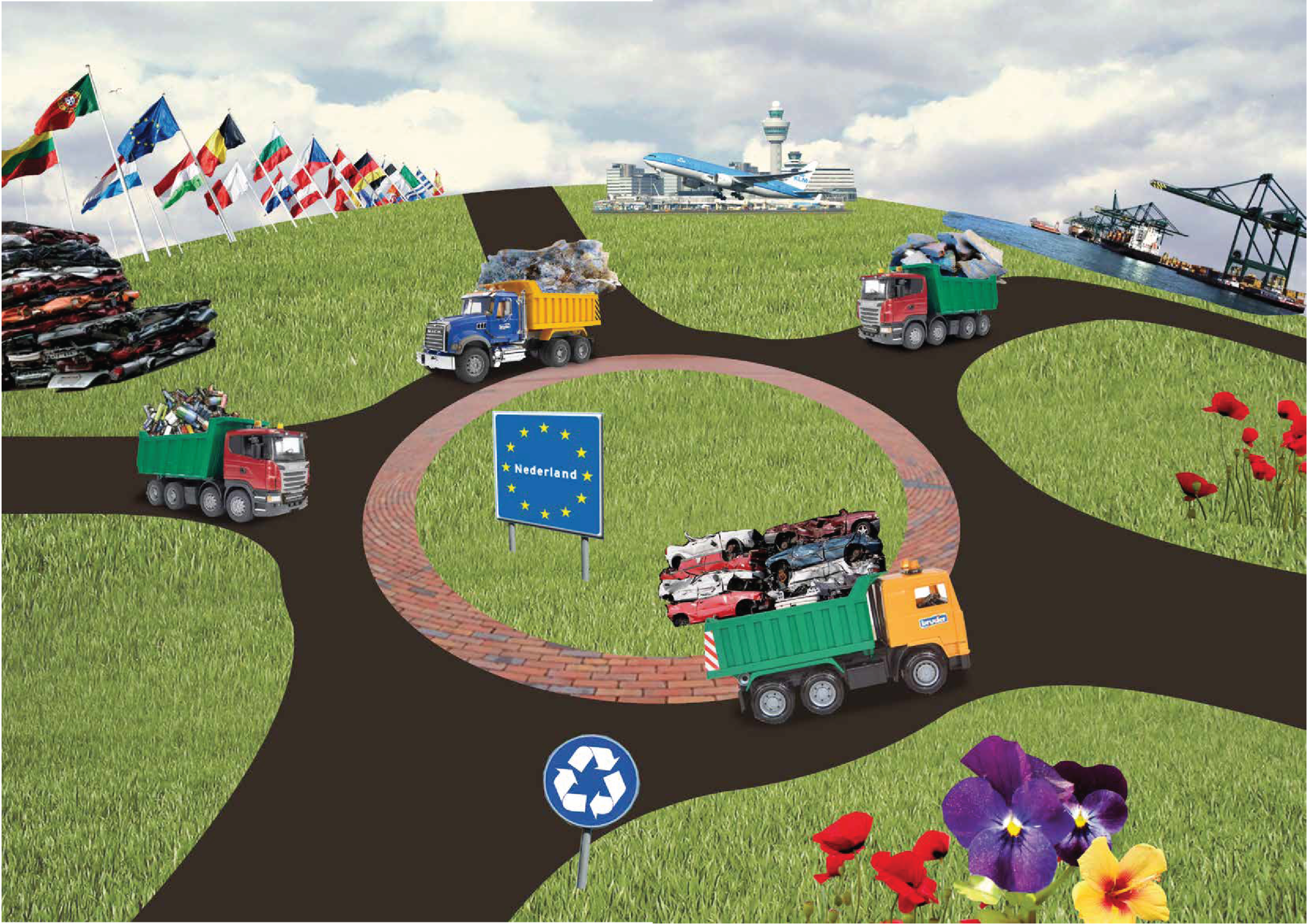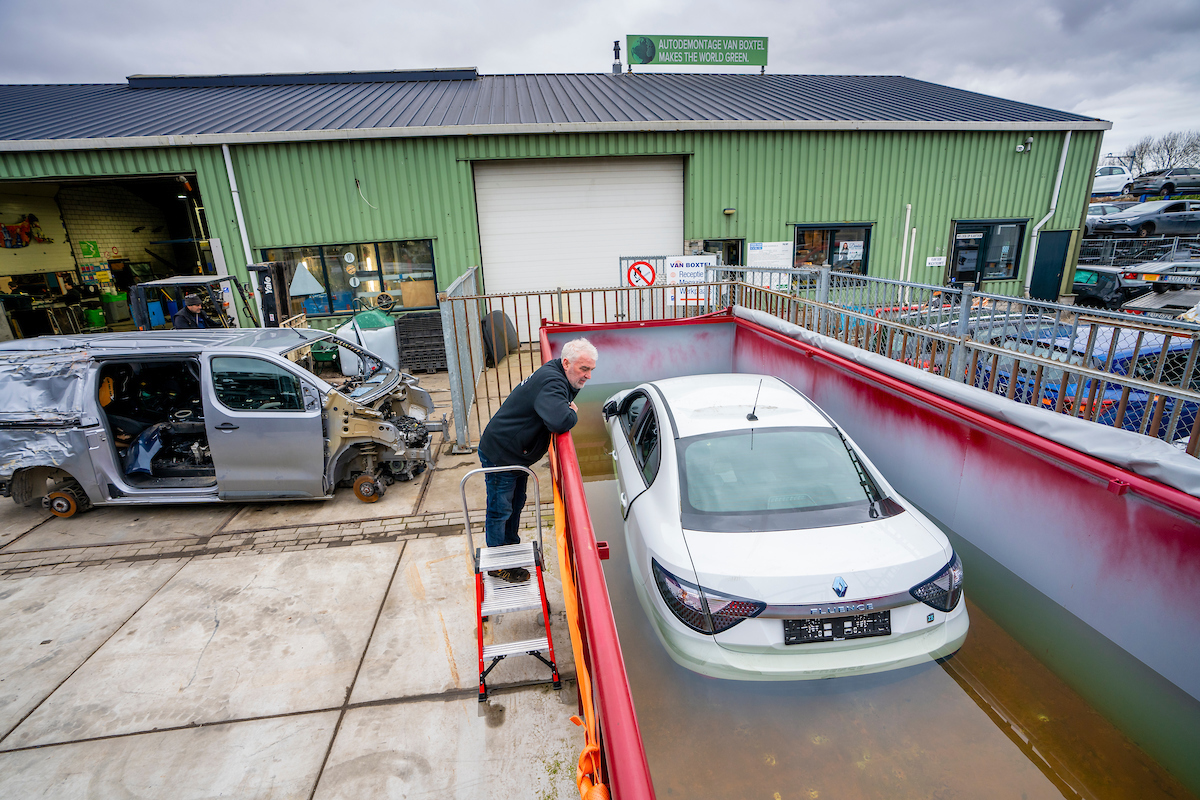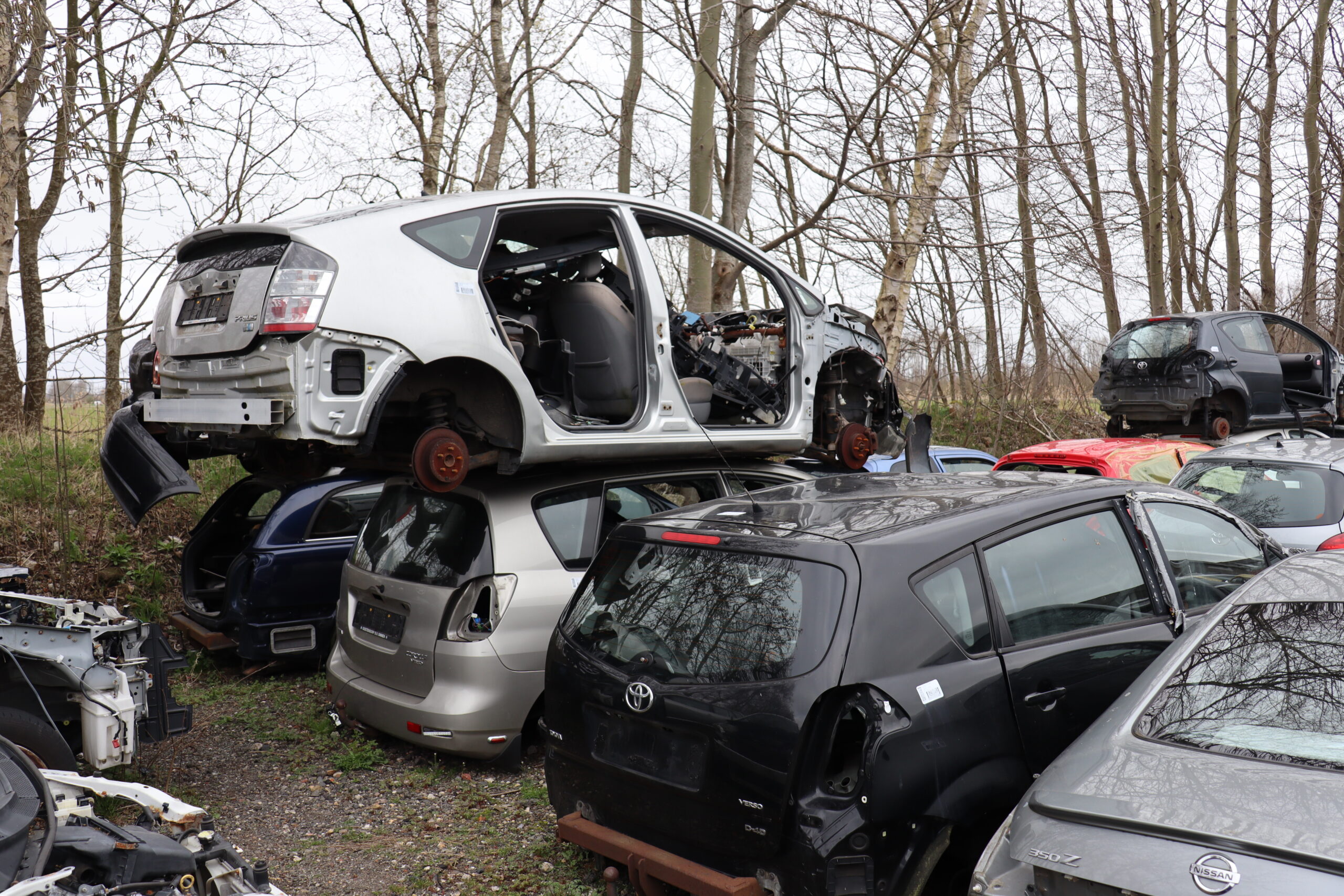In September, the PolyStyreneLoop demonstration plant by Lein Stange and Jan Noordegraaf in Terneuzen will produce its first granulates of recycled polystyrene. Tange: “We need people like Jan and myself. We want to prove that granulates can be manufactured at the same quality or even better than the original product.”
Tange has been ICL-IP’s Sustainability Director, involved in setting up plastic recycling projects, for twenty-five years. A uniquely positioned individual to start a demonstration plant. After five years of preparation and two months of testing, the plant is scheduled to commence operations early September. Together with Noordegraaf, the former director of polystyrene manufacturer Synbra Technology, Tange, founded the PolyStyreneLoop Coöperatie. PSLoop for short, the cooperative intends to demonstrate the feasibility of a large-scale demo installation as a closed-loop solution for polystyrene (PS) insulation foam waste recycling and bromine recovery. The demonstration plant in Terneuzen was officially opened on 16 June by outgoing State Secretary of Infrastructure and Water Management Stientje van Veldhoven. The actual kick off and production with a process developed by the Fraunhofer Institute and CreaCycle GmbH is scheduled for September 2021.
Recycling of old insulation boards
In a nutshell, the initial activities at the Terneuzen plant will consist of recycling old insulation boards sourced from the construction industry, by turning them into granulate that can be redeployed for its original purpose. The men are not concerned about the supply of these insulation boards. “In Europe alone, 20 to 40 million tonnes of insulation boards are contained in homes that will need to be renovated or demolished sooner or later. In a circular economy, all that polystyrene has to be processed one way or another. According to Tange, recycling these old construction materials is the subject of a great deal of European research, but nobody is actually building a plant to do it. “We are the first recycler in the world to take this step!” This is due to subsidy grants on the one hand and our knowledge and networks on the other. “We have the knowledge, networks and above all the passion to contribute to sustainable processing of residual streams.”

The demonstration plant has a recycling capacity of 3,000 to 4,000 tonnes of polystyrene (EPS), which includes 300 tonnes of Styrofoam (XPS)
Cooperative structure
An European collection network with countless collection points was built in order to get all of that old construction material supplied to Terneuzen. Demolished insulation boards are collected via a total of 75 members and supporters. This is why they opted for a cooperative. “Thanks to this structure, members are committed to collection and recycling.” The insulation boards are compressed for transportation in order to minimise both costs and CO2 emissions. The demonstration plant has a recycling capacity of 3,000 to 4,000 tonnes of polystyrene (EPS) annually, which includes 300 tonnes of Styrofoam (XPS). EPS is also used in cars, but separate collection is yet to be set up for that stream.
How does the recycling process work?
The compressed insulation foam is shredded into chips. Next, they are dissolved in a barrel and all contaminants are drained. For XPS, a low-temperature cooling unit is used to separate ozone-damaging propellants and a second solvent is added to form a gel. The bromine-containing flame-retardant is separated from that gel, and the bromine is recovered at the adjacent ICL-IP Europe production company to create a new, more environmentally friendly flame retardant. The gel is dried to form the end product: polystyrene granulate. This can be used to manufacture new polystyrene. “Because the EPS is dissolved and purified, the result is a much higher quality polymer.” Sales is another point of no concern. “All of the granulate is purchased by our members.”
Scaling up to reduce costs
The demonstration plant cost EUR 15 million. EUR 2.7 million was contributed by Europe, EUR 1 million by Zeeland province and EUR 4 million by the cooperative members. The remainder was funded with credit. The State has now included PSLoop in the National Waste Management Plan. Although the plant is not yet operational, Tange and Noordegraaf have their minds set on a second plant with a recycling capacity of 12,000 tonnes of insulation foam annually with an expected price tag of EUR 20 to 25 million. “It takes scale to reduce production costs.” The demonstration plant could become a testing plant in the future, e.g. for recycling plastics from electronics in household appliances or plastics sourced from cars.

Jan Noordegraaf (left) and Lein Tange
In the future, the demonstration plant could become a test plant for e.g. recycling of plastics sourced from cars
From recycling to upcycling
Tange explains that when it comes to recycling various types of plastics from scrapped cars, there is a lot to gain in terms of repurposing plastics as a raw material for new cars. “Recycling is only viable provided there is enough supply, which will take some work to achieve. The sorting technology to separate high-quality plastics leaves a lot to be desired. Plastics sourced from scrapped vehicles are often black, which gets in the way of infrared light-based sorting technology. This example is indicative of the fact that upcycling for plastics from cars has a long road of innovation ahead. But that is no reason to be deterred.”
Joining streams
“It is all about achieving scale. This can be done by combining waste streams from the automotive industry with streams of electronic waste”, Tange proceeds. He says that once the demonstration plant is up and running, Noordegraaf and himself will be looking at scaling up and recycling other streams including those from car dismantling companies. “Cars contain various engineering plastics that can be recycled, but volumes are currently small so they aren’t being sorted. This potential can be unlocked by joining streams, and getting materials that contain flame retardants delivered to us.” He emphasises the importance of collaboration between all parties in the chain. “Everything comes together: collection, analysis, processing and delivery. Plastics demand a very high level of knowledge, which is why it is important to involve e.g. plastics manufacturers in the process. In order to achieve the same quality as that of a new raw material, we need to involve all stakeholders and reach a high level of combined knowledge.”
Legislation
Finally, Tange points out that both Dutch and European legislation confronts the recycling industry with challenges. “A lot can be done when it comes to recycling, but plants will have to get built, to get it done. This requires huge investments with lead times between five and ten years. We may invest in a new technology, only to see legislation change in the meantime. Risk is inherent to entrepreneurship, but it is up to the authorities to be predictable and ensure that subsidies have a lead time of around five to ten years. Only then will people be willing to invest and innovate.”






